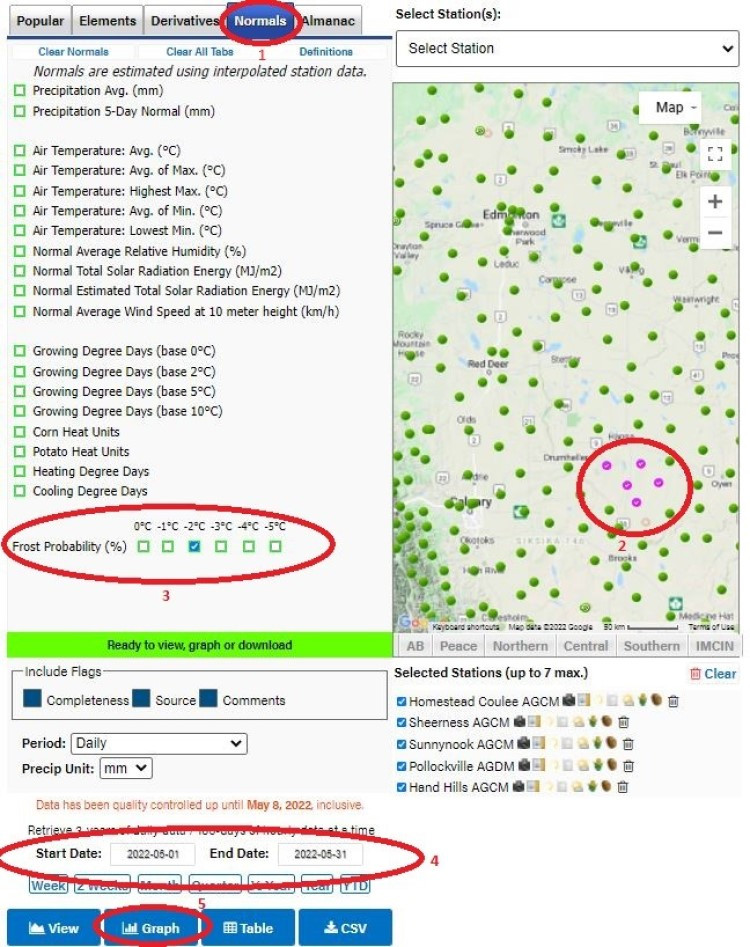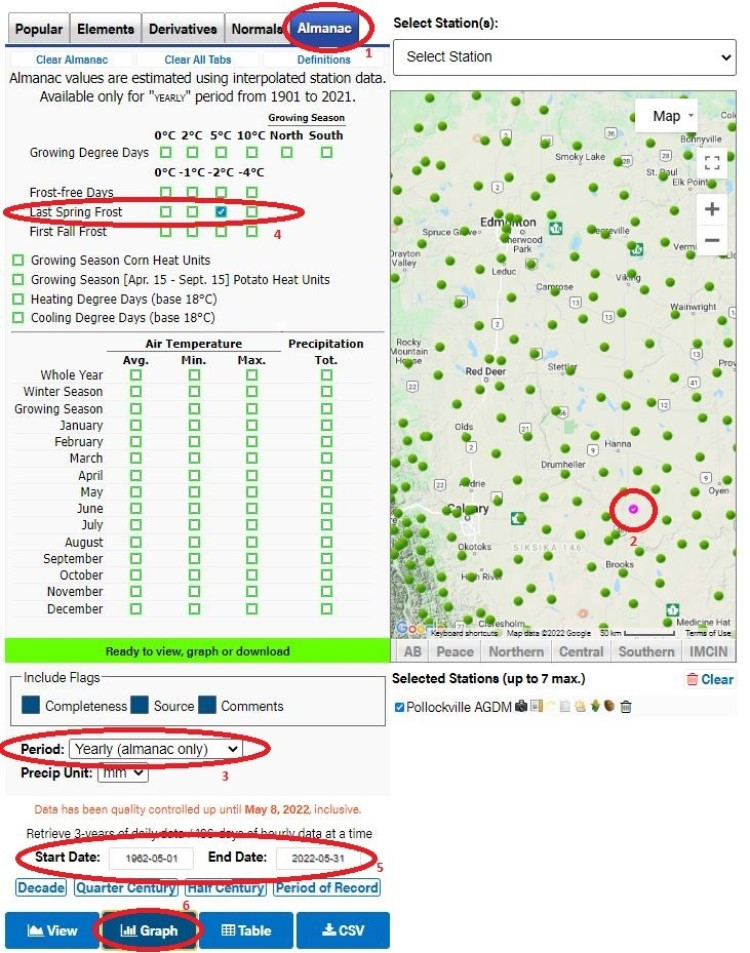Non-urgent government operations are closed December 24 to January 1, reopening January 2. View available services during this period.
See event listings and more articles in this edition of Agri-News: May 24, 2022 issue
As the spring thaw continues through the month of May, many gardeners’ minds turn to their beloved seasonal pastime of transplanting their young seedlings into the soil. As most avid gardeners know this can be a stressful time as they hope their investment of time, toil, and money does not go to waste due to unfavourable weather conditions.
“If only there were some way to find out the probability of a frost? Maybe something online? Perhaps a tool that could cover major agricultural areas in my province and allows me to find this information for my immediate area?” asks Jennifer Lang-Gorman, technical operations specialist with the Alberta government.
“Consider this your long awaited invitation to the Alberta Climate Information Service. By visiting the website, your gardening game just levelled up with high-quality reliable climate data that will help you make informed weather-based decisions.”
Weather station information
On the Alberta Climate Information Service (ACIS) home page, select Weather Station Data. On the Weather Station Data page:
- Select the Normals tab.
- Click on the desired stations on the map in your chosen area.
- Select your frost severity by clicking in the boxes highlighted in green (-2°C is used in this demo).
- Select the date (in this case we want to know what the conditions will be like for the month of May 2022).
- Generate the data. In this case we are creating a graph of May 1 to 31, 2022.
“According to the generated graph, May 24 appears to be the ‘historically’ safe date when the probability drops below 5%. If the local forecast is predicting warmer than normal weather, it is less likely there will be frost and perhaps you can plant a bit earlier if you are willing to risk it. But remember, beyond 3 to 5 days, the forecast could be wrong,” explains Lang-Gorman.
Image 1. Step-by-step Instructions

60 years of frost probability data
On the Alberta Climate Information Service (ACIS) home page, select Weather Station Data. On the Weather Station Data page:
- Select the Almanac tab.
- Click on the desired stations on the map in your chosen area (one station was selected for this demo).
- Select Yearly for the Period.
- Select the Last Spring Frost by clicking in the boxes highlighted in green (-2°C is used in this demo).
- Select the date (in this case we want to know what the conditions will be like from 1962 to 2022).
- Generate the data by clicking on the Graph icon.
- According to the graph: Yearly Values, the latest spring frost for -2°C was June 13 in 1969 and the earliest last frost of the season occurred on April 16 in 2007.
“You may be thinking that the last few years is a better indication of when frost will occur this year,” says Lang-Gorman. “However, using this approach is generally not recommended. Even though the graph shows that over the previous 4 years the last frost occurred between May 12 and May 26, there are many other times when short duration ‘patterns’ changed dramatically.”
Image 2. Calculating frost probabilities

“Visit the Alberta Climate Information Service for all your climate data needs at weatherdata.ca on your desktop or mobile device. Be in the know this growing season by making ACIS your go-to weather page,” says Lang-Gorman.
Contact
For more information, connect with Jennifer Lang-Gorman at 780-427-3559.
Sign up for Agri-News
Start every Monday with the week’s top agricultural stories and latest updates.
Read about all things agriculture at Alberta.ca/agri-news